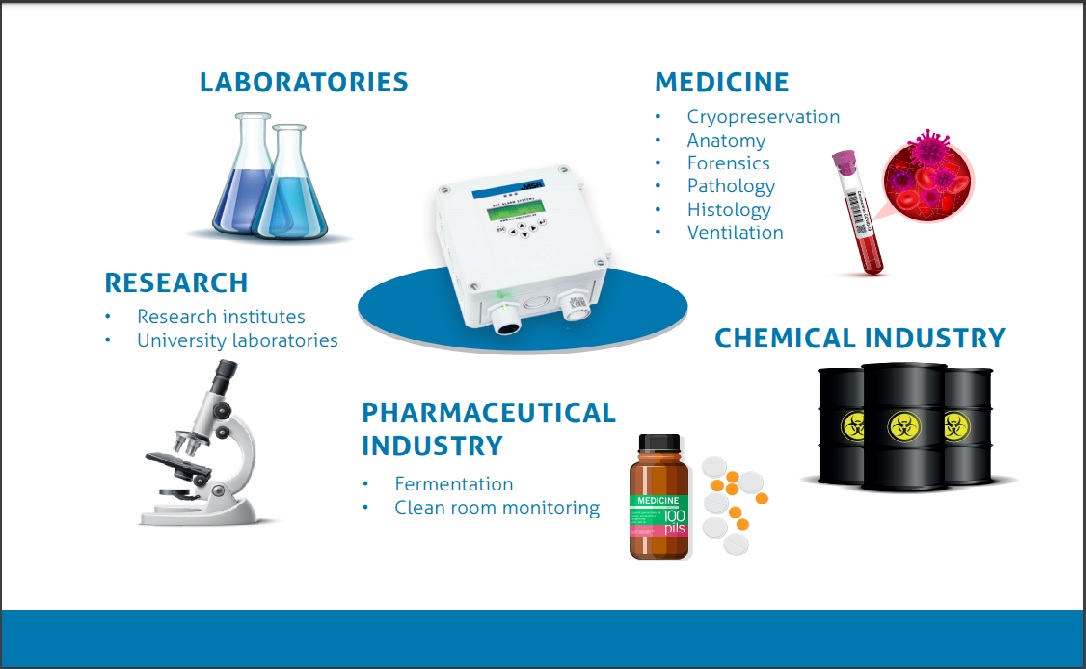
When handling various hazardous substances in laboratories and medical facilities, relevant safety measures must be observed to comply with the guidelines. Reliable gas monitoring for laboratories is quite critical as various gases are used in laboratory application and each gas carries its own risk. Few applications and risks associated with it are listed as below:
Carbon dioxide (CO2): The laboratory gas as a cooling medium (dry ice) is used in sample transport and storage as well as in incubators and chromatography equipment in cryogenic areas. Risk: Carbon dioxide hinders the absorption of oxygen and leads to death if the concentration is too high.
Oxygen (O2): Laboratories store and work with high concentrations of oxygen used in gas production and gas mixing stations. Risk: The displacement of oxygen by other gases.
Nitrogen (N2): Nitrogen is used as a cooling medium for shock freezing and for storage of medical samples in laboratories and used in cryogenics. Risk: Danger of suffocation by oxygen displacement.
Hydrogen (H2): The carrier gas is increasingly used in gas chromatography and is gaining popularity as a substitute for helium, which has been the preferred carrier gas until now. Risk: Danger of explosive gas mixtures.
Propane (C3H8) and Methane (CH4) Methane and its gas mixtures are used to operate Bunsen burners in laboratories or as a starting product for technical syntheses. Risk: Danger of explosive gas mixtures.
Formaldehyde (CH2O) In the form of formalin, it is used to fix tissue samples. It is also used as a disinfectant for cleaning large surfaces. Risk: Toxic, carcinogenic gas.
Ozone (O3) Ozone is proven to be effective against bacteria, microorganisms and other pathogens and is therefore used for disinfection in various applications. Risk: Toxic, headache, cough and irritation of the respiratory tract.
Laboratory areas must be constantly monitored in order to protect against hazardous substances. At Gas Alarm Systems, we are particularly flexible in this respect, as all requirements can be tailored to suit individual needs. Whether individual sensors with connection to existing BMS systems or complex self-sufficient gas detection systems for large-scale laboratories with different areas; our system includes freely configurable alarm thresholds for compliance and comes with various interfaces (Modbus, Bacnet, analog output) for connection to existing BMSs. The system is adapted to your requirements by means of a modular structure.
Please e-mail us today if you have similar application or call us at 02 98387220 to discuss your application